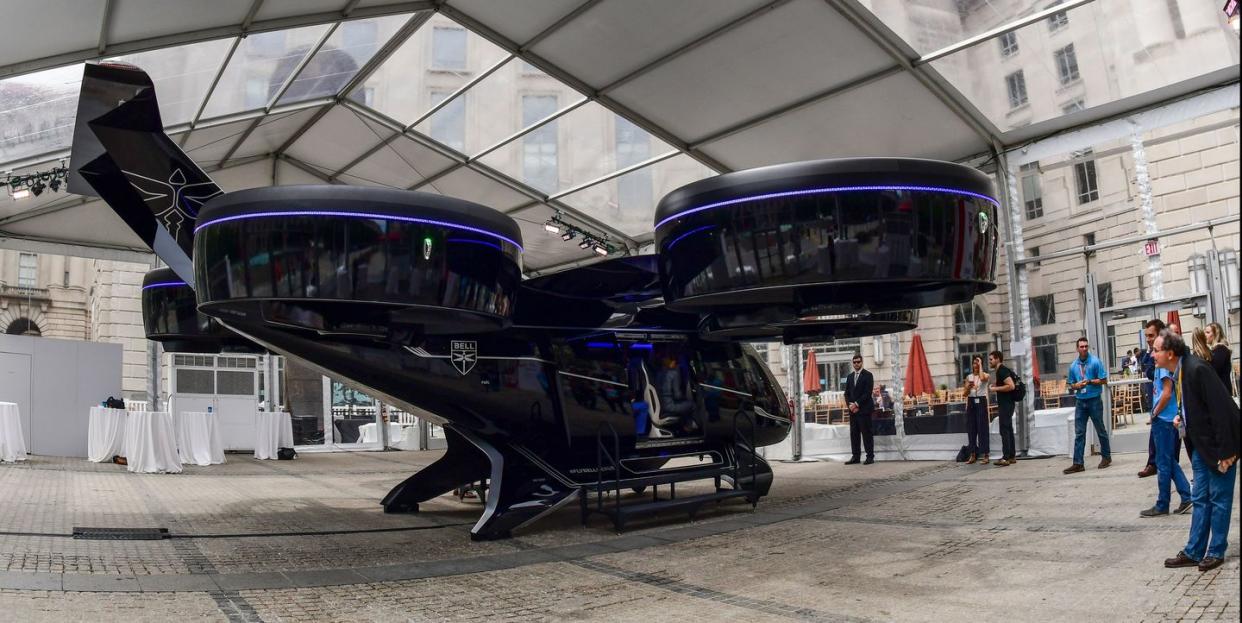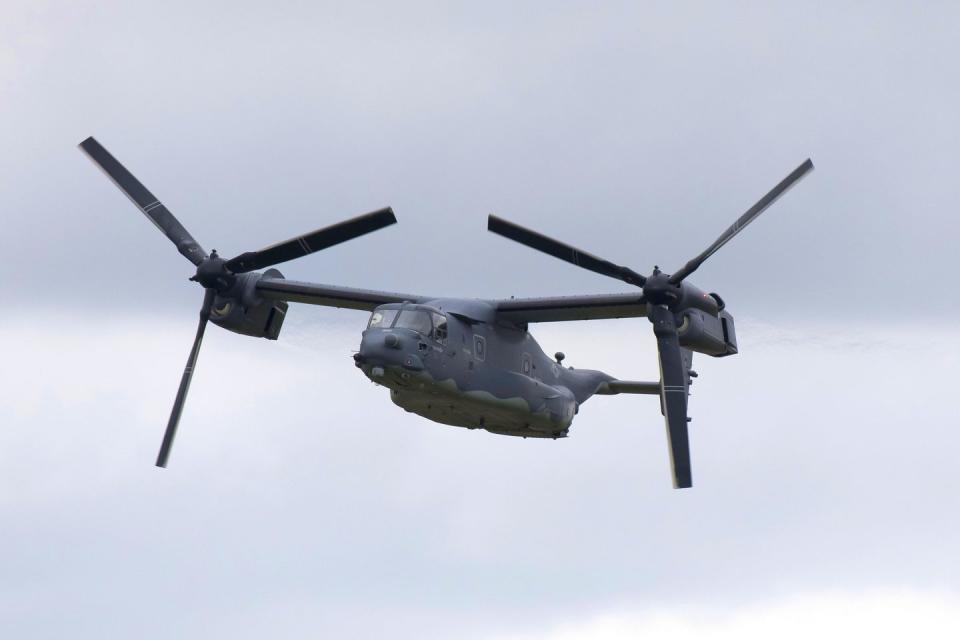Why the U.S. Air Force Is Looking Into Its Own 'Flying Cars'

The Air Force wants to cash in on the flying car craze to field a new type of transport.
Flying cars would be quieter than other types of air transport, attracting less attention.
A large enough electric car could someday replace the CV-22B Osprey.
The U.S. Air Force is looking into fielding so-called “flying cars” to use as quiet transport vehicles. The Assistant Secretary of the Air Force for Acquisition Will Roper wants to leverage the work of aviation companies to produce aerial taxis to create a military-grade vehicle. The result could be the 21st century's equivalent of a jeep or truck, but one that quietly flies from Point A to Point B.
DefenseOne, covering the Air Force Association’s Air, Space & Cyber conference, quoted Roper as saying that the service is kicking off a new effort, named Agility Prime, to explore the possibility of acquiring a flying car or truck. An electric-powered flying car would be relatively quiet, allowing troops to travel near and across the battlefield without the loud rotor noise of conventionally powered aircraft. The sound of helicopters and tiltrotor aircraft can travel for miles, tipping off enemy forces on the ground.
A similar effort to adapt flying cars to carry special forces kicked off in 2016, but didn’t go anywhere, due to the relatively small carrying capacity of flying cars. The head of Uber’s aviation engineering department told DefenseOne that the small carrying capacity of the "cars" meant troops would travel in ones and twos, rather than the larger groups that can deploy from a V-22 Osprey or MH-47 Chinook. The special operations community evidently prefers transport in larger numbers to have an entire raiding force land at once in full strength.

The Air Force now appears to be tailoring the flying car concept to a different mission, away from special operations transport to something that could act more like a flying jeep, or truck.
“The task I gave the team was to prepare a series of challenges,” DefenseOne quotes Roper as saying, “from things that would involve smaller vehicles, maybe moving a couple of special aviators around, to things involving smaller logistics sets, ammo, meals, that kind of thing, out of harm’s way, up to moving heavy logistics, like weapons to reload on an aircraft, all the way to a bigger system.”
The idea of moving weapons to reload aircraft is particularly intriguing. The U.S. military is moving towards the idea of distributed operations, scattering aircraft in smaller numbers across wider areas as a hedge against enemy attack. This could include using civilian airports and other locations to launch and recover aircraft. A flying car could rendezvous with F-35A fighter jets at a remote airfield, delivering a clutch of air-to-air missiles or other munitions to rearm the fighter for new missions.
The U.S. Air Force operates a variety of special operations aircraft, including the V-22 Osprey, for insertion and recovery of special forces troops from hostile territory. A larger version of a flying car could eventually replace the Osprey itself.
You Might Also Like

